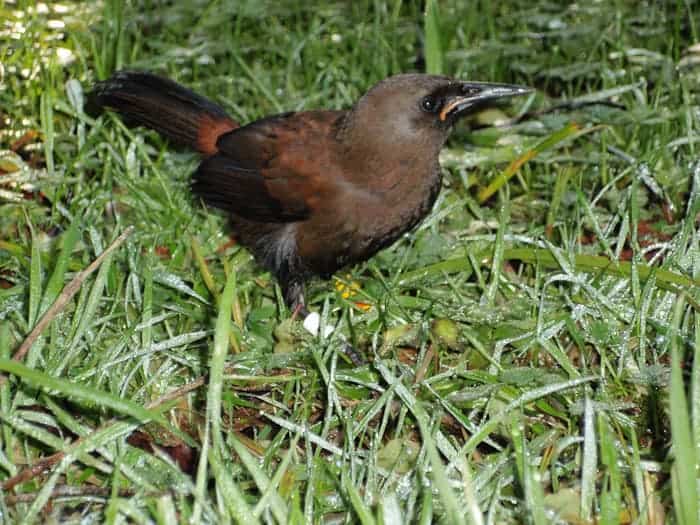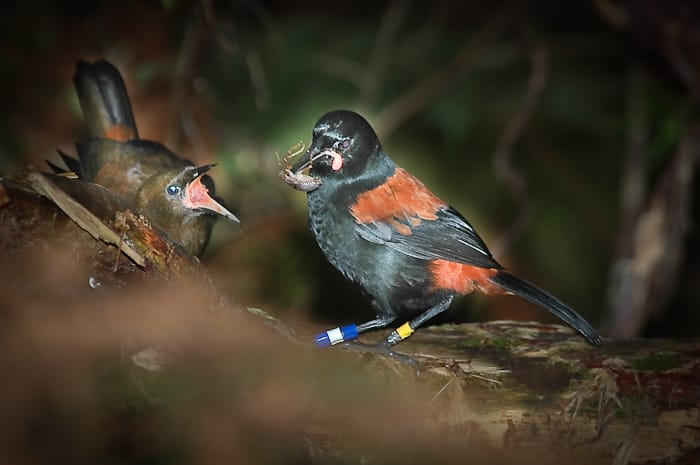South Island Saddleback are one of the success stories of New Zealand species conservation. Once common throughout the South Island, by 1962 they were restricted to just 4 offshore islands at the south of Stewart Island.
Rat predation having seen the rest off. And then in 1962 rats were discovered ashore on these islands and by 1968 when a rescue attempt was mounted only a handful of birds remained to be salvaged and sifted to rat free island sanctuaries.
It may sound odd, but the official response of Government at the time was that our native species would “learn” to cope with rats. Looking at this countries extinction list this is quite patently not the case.
In our defense I can say that New Zealand does a lot better now. Saddlebacks were released onto Ulva Island after rats were eradicated in the mid ’90’s and have done very well, with probably around 400 individuals on the 600 acre Island.

Sadlleback are quite handsome, with their prominent red saddle and rump patch, glossy black wing and body, and the distinctive wattles. Unlike the North Island variety, which has the saddle from fledging, ours are a dull brown/black, with a dusting of brick red. And the north island birds have a lemon fringe to the front of the saddle, which ours lack.

They feed principally on insects which they find from forest floor to the high canopy, and a unique hinge mechanism allows them sufficient opening strenght in their beak to use it as a prybar to separate bark from the tree trunks to get at hidden insects.
This gives them a distinct advantage over other insect feeders. They take nectar at times and in the autumn will target fruit, especiall Coprosma sp. berries. Like so many New Zealand species they are quite unafraid of people, and I remember once leaning against a forked tree talking to my guests when one exclaimed that there was a saddleback just beside me.
It was perhaps a hand span from my shoulder, waiting for me to move away. As unbeknown to me I was blocking the entrance to its nest. The book says they are poor flyers, although I do think that a bit rich from a species that can’t fly. Rather I would say they are lazy fliers, often preferring to hop and bounce along the ground and from branch to branch.
Peter Tait
Peter Tait is a professional nature guide based at Stewart Island, New Zealand, and he works primarily on Ulva Island Open Sanctuary. Peter has been resident on the Island for over 40 years and was one time Forest Ranger in Charge of Stewart Island. Fishing followed forestry and was in turn followed by Talisker, a 17m charter yacht. He is qualified Skipper Deep Sea Fishing Vessel. In addition to guiding Peter and his wife Iris are hosts at Sails Ashore Lodge.
Leave a Reply